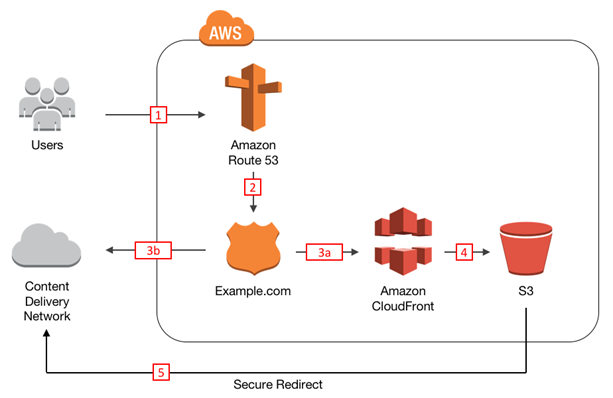AWS Security Blog
Category: How-To
How to Control TLS Ciphers in Your AWS Elastic Beanstalk Application by Using AWS CloudFormation
Securing data in transit is critical to the integrity of transactions on the Internet. Whether you log in to an account with your user name and password or give your credit card details to a retailer, you want your data protected as it travels across the Internet from place to place. One of the protocols […]
How to Visualize and Refine Your Network’s Security by Adding Security Group IDs to Your VPC Flow Logs
September 9, 2021: Amazon Elasticsearch Service has been renamed to Amazon OpenSearch Service. See details. August 31, 2020: The directions in this blog post for how to create an Amazon ES cluster have been updated. February 28, 2019: The features and services described in this post have changed since the post was published and the […]
How to Enable the Use of Remote Desktops by Deploying Microsoft Remote Desktop Licensing Manager on AWS Microsoft AD
AWS Directory Service for Microsoft Active Directory, also known as AWS Microsoft AD, now supports Microsoft Remote Desktop Licensing Manager (RD Licensing). By using AWS Microsoft AD as the directory for your Remote Desktop Services solution, you reduce the time it takes to deploy remote desktop solutions on Amazon EC2 for Windows Server instances, and […]
How to Use Service Control Policies in AWS Organizations to Enforce Healthcare Compliance in Your AWS Account
AWS customers with healthcare compliance requirements such as the U.S. Health Insurance Portability and Accountability Act (HIPAA) and Good Laboratory, Clinical, and Manufacturing Practices (GxP) might want to control access to the AWS services their developers use to build and operate their GxP and HIPAA systems. For example, customers with GxP requirements might approve AWS […]
How to Monitor Host-Based Intrusion Detection System Alerts on Amazon EC2 Instances
September 9, 2021: Amazon Elasticsearch Service has been renamed to Amazon OpenSearch Service. See details. To help you secure your AWS resources, we recommend that you adopt a layered approach that includes the use of preventative and detective controls. For example, incorporating host-based controls for your Amazon EC2 instances can restrict access and provide appropriate […]
How to Help Protect Dynamic Web Applications Against DDoS Attacks by Using Amazon CloudFront and Amazon Route 53
Using a content delivery network (CDN) such as Amazon CloudFront to cache and serve static text and images or downloadable objects such as media files and documents is a common strategy to improve webpage load times, reduce network bandwidth costs, lessen the load on web servers, and mitigate distributed denial of service (DDoS) attacks. AWS […]
How to Access the AWS Management Console Using AWS Microsoft AD and Your On-Premises Credentials
AWS Directory Service for Microsoft Active Directory, also known as AWS Microsoft AD, is a managed Microsoft Active Directory (AD) hosted in the AWS Cloud. Now, AWS Microsoft AD makes it easy for you to give your users permission to manage AWS resources by using on-premises AD administrative tools. With AWS Microsoft AD, you can […]
How to Protect Your Web Application Against DDoS Attacks by Using Amazon Route 53 and an External Content Delivery Network
Distributed Denial of Service (DDoS) attacks are attempts by a malicious actor to flood a network, system, or application with more traffic, connections, or requests than it is able to handle. To protect your web application against DDoS attacks, you can use AWS Shield, a DDoS protection service that AWS provides automatically to all AWS […]
How to Audit Your AWS Resources for Security Compliance by Using Custom AWS Config Rules
AWS Config Rules enables you to implement security policies as code for your organization and evaluate configuration changes to AWS resources against these policies. You can use Config rules to audit your use of AWS resources for compliance with external compliance frameworks such as CIS AWS Foundations Benchmark and with your internal security policies related […]
How to Enable Multi-Factor Authentication for AWS Services by Using AWS Microsoft AD and On-Premises Credentials
You can now enable multi-factor authentication (MFA) for users of AWS services such as Amazon WorkSpaces and Amazon QuickSight and their on-premises credentials by using your AWS Directory Service for Microsoft Active Directory directory, also known as AWS Microsoft AD. MFA adds an extra layer of protection to a user name and password (the first “factor”) […]









